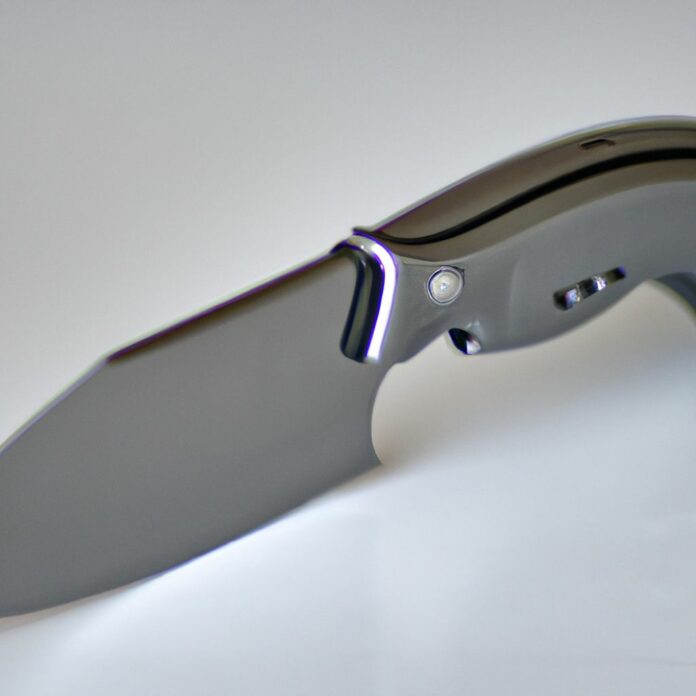Tactical rescue knives are versatile tools designed to assist in emergency situations and provide aid in critical conditions. Whether it’s rescuing someone trapped in a vehicle, cutting through tough materials, or defending oneself, these knives are specifically crafted with features that make them suitable for various rescue operations.
A tactical rescue knife is a specialized tool that combines the functionalities of a traditional knife with features that enable it to handle emergency situations effectively.
These knives are typically characterized by their strong and durable construction, serrated edges, and specialized features such as glass-breaking tips, seatbelt cutters, and sometimes even integrated tools like screwdrivers or wrenches.
Choosing the right tactical rescue knife depends on various factors such as intended use, personal preference, and budget. Consider factors like blade type, size, handle design, and overall durability to select a knife that suits your specific needs.
Researching reputable manufacturers and reading reviews can help ensure you make an informed decision.
By understanding the features, types, and applications of tactical rescue knives, you can make an informed choice and have a reliable tool at your disposal during emergency situations.
What is a Tactical Rescue Knife?
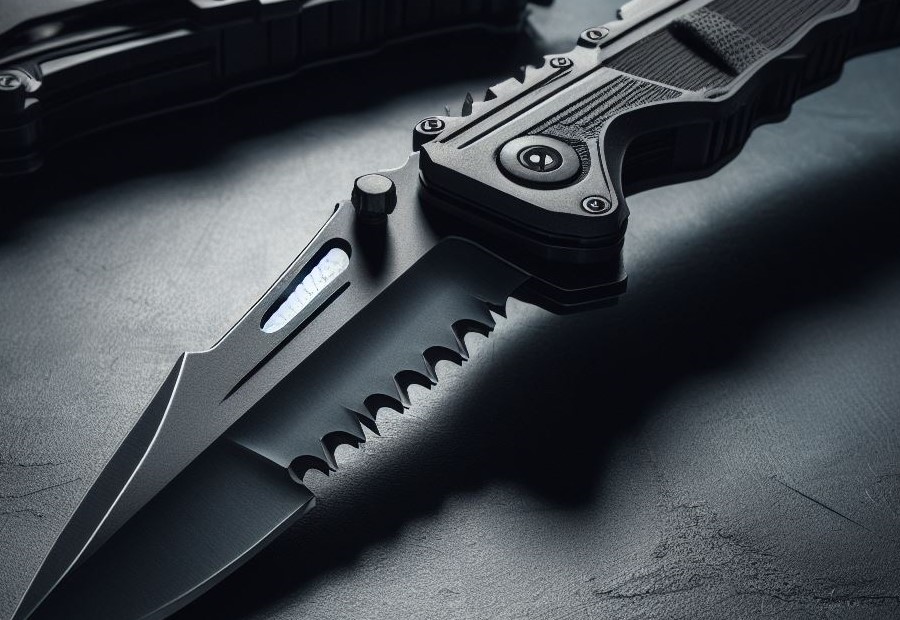
When it comes to tactical rescue knives, understanding their true essence is crucial. In this section, we’ll explore the world of these versatile tools. Discover their defining features and uncover the diverse ways they can be utilized.
Get ready to dive into the realm of tactical rescue knives and learn why they are an indispensable companion for those in emergency situations.
Definition and Characteristics
A tactical rescue knife is a versatile tool designed specifically for emergency situations and rescue operations. It is characterized by its unique features and components that make it suitable for various life-saving tasks.
| Definition of a Tactical Rescue Knife | A tactical rescue knife is a specialized tool used in emergency situations for cutting, slicing, and breaking objects. It is designed with features that enhance its functionality and durability, making it an essential tool for first responders, firefighters, and law enforcement personnel. |
| Characteristics of a Tactical Rescue Knife | Tactical rescue knives are typically made with high-quality materials such as stainless steel or carbon fiber to ensure strength and resistance to corrosion. They often have a serrated blade for cutting through tough materials like seatbelts or ropes. The handle is designed for a secure grip, even in wet conditions, and may include additional features like a glass breaker or a seatbelt cutter. These knives are compact and lightweight, allowing for easy carrying and accessibility during critical situations. |
When choosing a tactical rescue knife, it is important to consider the specific needs and requirements of the intended use.
Factors such as blade material and design, handle material and design, weight and size, and locking mechanisms play a crucial role in determining the effectiveness and reliability of the knife in rescue operations.
Types of Tactical Rescue Knives
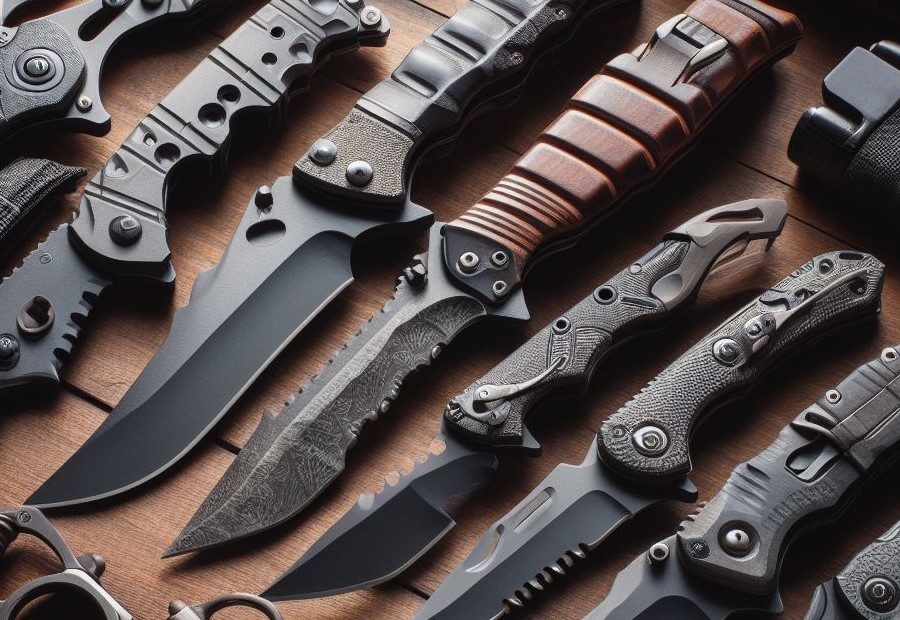
Discover the world of tactical rescue knives and the various types that exist. From folding tactical rescue knives to fixed blade and multi-tool options, explore the unique features and functionalities each sub-section offers.
Whether you’re seeking convenience, durability, or versatility, dive into the realm of tactical rescue knives and find the perfect tool to meet your needs.
Folding Tactical Rescue Knives
When it comes to folding tactical rescue knives, they are a popular choice for a variety of reasons.
Here are some of the key reasons why:
- Portability: Folding tactical rescue knives are compact and easy to carry, making them convenient for everyday use or emergency situations.
- Versatility: These knives are designed to be versatile, often including additional tools and features like seatbelt cutters, glass breakers, and serrated blades. This makes them suitable for a wide range of rescue scenarios.
- Easy Deployment: One of the advantages of folding knives is that they can be quickly and easily deployed with just one hand. This allows for swift action when time is of the essence.
- Safe Handling: Folding knives are designed with a mechanism that allows them to be securely closed and locked. This reduces the risk of accidental injuries when the knife is not in use.
- Durability: High-quality folding tactical rescue knives are made with strong materials such as stainless steel and durable handle materials. This ensures their longevity and effectiveness in demanding situations.
- Concealability: Folding knives offer the advantage of being discreetly carried in a pocket or clipped to a belt. This allows for easy access without attracting unwanted attention.
When selecting a folding tactical rescue knife, it is important to consider your specific needs and preferences.
Factors such as blade material, handle design, weight, and locking mechanism should be taken into account to find the perfect knife that will serve you well in any rescue situation.
Fixed Blade Tactical Rescue Knives
- Definition: Fixed blade tactical rescue knives are a type of knife that has a non-folding blade that is permanently fixed to the handle.
- Sturdiness: Fixed blade tactical rescue knives are known for their durability and strength, making them suitable for heavy-duty tasks.
- Reliable: Unlike folding knives, fixed blade tactical rescue knives have no moving parts or hinges, which makes them less likely to fail or break during critical situations.
- Quick and Easy Deployment: With no need to unfold or open the blade, fixed blade tactical rescue knives are ready to use immediately, making them ideal for emergency situations.
- Versatility: Fixed blade tactical rescue knives come in various blade shapes and lengths, allowing users to choose one that suits their specific needs, such as cutting seatbelts, ropes, or breaking glass.
- Ease of Maintenance: Due to their simple design, fixed blade tactical rescue knives are generally easier to clean and maintain compared to folding knives.
- Safety: Fixed blade tactical rescue knives typically come with a sheath or holster, which not only protects the blade but also enables safe and secure carrying and storage.
Multi-Tool Tactical Rescue Knives
When it comes to tactical rescue knives, multi-tool tactical rescue knives provide a versatile solution for various situations.
Here are some key features and uses:
- Multiple Tools: Multi-tool tactical rescue knives come with a range of built-in tools, such as pliers, screwdrivers, and saws, in addition to the knife blade. This allows for increased functionality and flexibility in emergency situations.
- Convenience: With multiple tools in one compact device, multi-tool tactical rescue knives eliminate the need to carry multiple tools separately, saving space and making them easy to carry.
- Emergency Preparedness: These knives are designed to be used in various emergency situations, including car accidents, outdoor adventures, and survival scenarios. They offer a wide range of capabilities to handle different tasks.
- Versatility: The different tools included in multi-tool tactical rescue knives enable users to perform a variety of tasks, such as cutting seatbelts, breaking glass, opening bottles, and tightening screws. They are a valuable asset in both rescue and everyday situations.
- Durability: Multi-tool tactical rescue knives are built to withstand challenging environments and heavy use. They are typically made of high-quality materials, such as stainless steel, to ensure durability and longevity.
With their multifunctionality and durability, multi-tool tactical rescue knives offer a reliable and practical tool for emergency preparedness and everyday tasks.
Features and Components of Tactical Rescue Knives
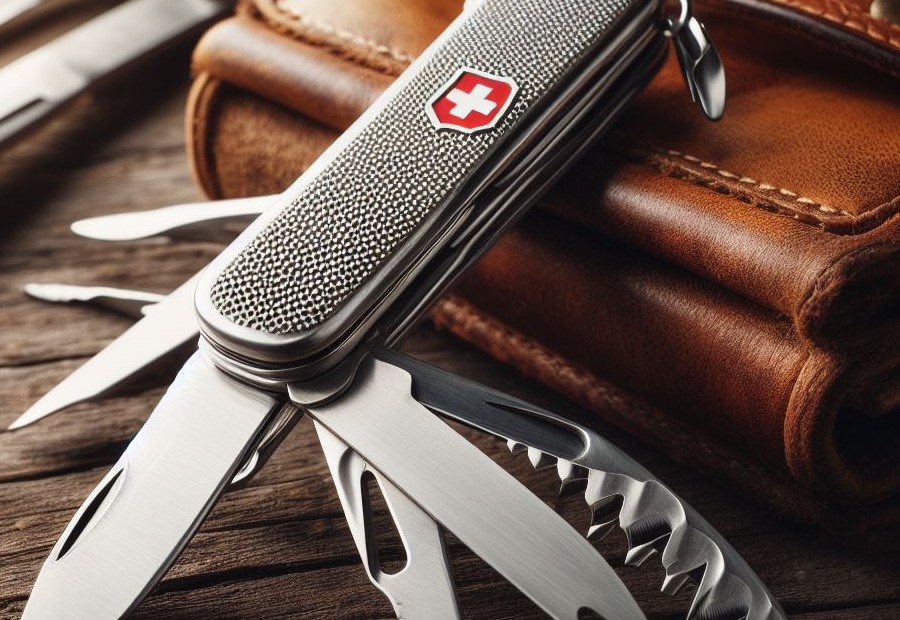
Tactical rescue knives go far beyond your average pocketknife – they are built with specific features and components that make them essential tools in emergency situations. In this section, we’ll explore the key aspects of tactical rescue knives that set them apart.
From the blade material and design to the handle material and design, as well as the weight and size, and the various locking mechanisms available – we’ll uncover what makes these knives reliable and indispensable in critical moments.
Blade Material and Design
Blade Material and Design is an important aspect to consider when choosing a tactical rescue knife. The table below provides information on different blade materials and designs commonly found in these knives:
| Blade Material | Design |
| Stainless Steel | Straight Edge, Partially Serrated Edge, Tanto Point, Drop Point |
| High Carbon Steel | Straight Edge, Clip Point, Spear Point |
| Titanium | Straight Edge, Wharncliffe Point, Sheepsfoot |
| Ceramic | Straight Edge |
| Composite | Combination of Stainless Steel and Titanium or other materials |
Understanding the blade material and design is crucial as it directly affects the knife’s performance in different rescue situations.
Stainless steel blades are durable and corrosion-resistant, suitable for general use. High carbon steel blades offer excellent strength and sharpness, ideal for heavy-duty tasks.
Titanium blades are lightweight and have high corrosion resistance. Ceramic blades provide exceptional hardness and keep an edge longer. Composite blades offer a combination of strength and durability.
When choosing a tactical rescue knife, consider the specific needs and requirements of your intended applications. Ensure that the blade material and design align with the tasks you may encounter during emergencies or rescue operations.
Pro-tip: Remember to maintain and regularly sharpen the blade of your tactical rescue knife to ensure optimal performance and reliability when it’s needed most.
Handle Material and Design
The handle material and design of a tactical rescue knife are essential factors that greatly influence its functionality and performance.
It is crucial for the handle to offer a comfortable grip and ensure a secure hold, especially in wet or challenging conditions. Additionally, the handle should be durable and resistant to wear and tear.
Below is a table that outlines various handle materials and their respective characteristics:
| Handle Material | Characteristics |
|---|---|
| G10 | Lightweight, strong, and resistant to moisture and chemicals. |
| FRN (Fiberglass Reinforced Nylon) | Durable, lightweight, and provides a secure grip. |
| Micarta | Offers excellent grip even when wet, and has a classic appearance. |
| Carbon Fiber | Extremely lightweight, yet strong, and resistant to corrosion. |
| Titanium | Highly durable, lightweight, and corrosion-resistant. |
Choosing a suitable handle material that aligns with your preferences and intended use of the tactical rescue knife is of utmost importance. Factors to consider include weight, grip, and aesthetics.
Weight and Size
When considering tactical rescue knives, weight and size are two important factors to take into account. The weight of the knife is crucial for stability and durability, while the size affects portability and functionality.
A heavier knife offers more stability and durability, making it suitable for tougher tasks. On the other hand, a lighter knife provides greater maneuverability and ease of use. The ideal weight depends on personal preference and the specific tasks the knife will be used for.
Size is also a crucial consideration when choosing a tactical rescue knife. A smaller knife is easier to carry and conceal, making it ideal for everyday carry or covert operations.
In contrast, a larger knife offers more cutting power and can handle heavier-duty tasks. The size of the knife can vary from compact (under 6 inches) to full-sized (over 9 inches).
| Weight: | The weight can vary depending on the materials used and additional features. |
| Size: | The size can range from compact (under 6 inches) to full-sized (over 9 inches). |
When choosing a tactical rescue knife, it is essential to consider your specific needs and preferences. If you require a knife for everyday carry or discreet use, a lightweight and compact design would be a good choice.
However, for heavy-duty tasks or professional use, a larger and more substantial knife may be more suitable.
Finding the right balance between weight and size is crucial to meet your requirements and ensure optimal performance in emergency situations.
Locking Mechanisms
When choosing a tactical rescue knife, it is important to consider the locking mechanisms. These locking mechanisms play a crucial role in ensuring the blade remains securely in place during use, which prevents any accidental closures that could potentially lead to injury.
There are various types of locking mechanisms that are commonly found:
- Liner lock: The liner lock mechanism utilizes a liner inside the handle that moves into position to securely lock the blade.
- Frame lock: In the case of a frame lock mechanism, a part of the handle (the frame) moves into place to effectively lock the blade.
- Axis lock: The axis lock uses a bar that can be accessed from both sides of the handle, providing a secure lock for the blade.
- Lock back: With a lock back mechanism, a locking mechanism is incorporated into the spine of the handle.
Each type of locking mechanism has its own advantages and disadvantages, and ultimately, the choice depends on personal preferences and specific needs. Some locking mechanisms may be easier to use with one hand, while others offer more robust blade security.
It is essential to try out different locking mechanisms to find the one that best fits your grip and style of use.
Fun fact: The Benchmade Griptilian knife is equipped with an axis lock, which is highly esteemed for its exceptional strength and reliability.
Uses and Applications of Tactical Rescue Knives
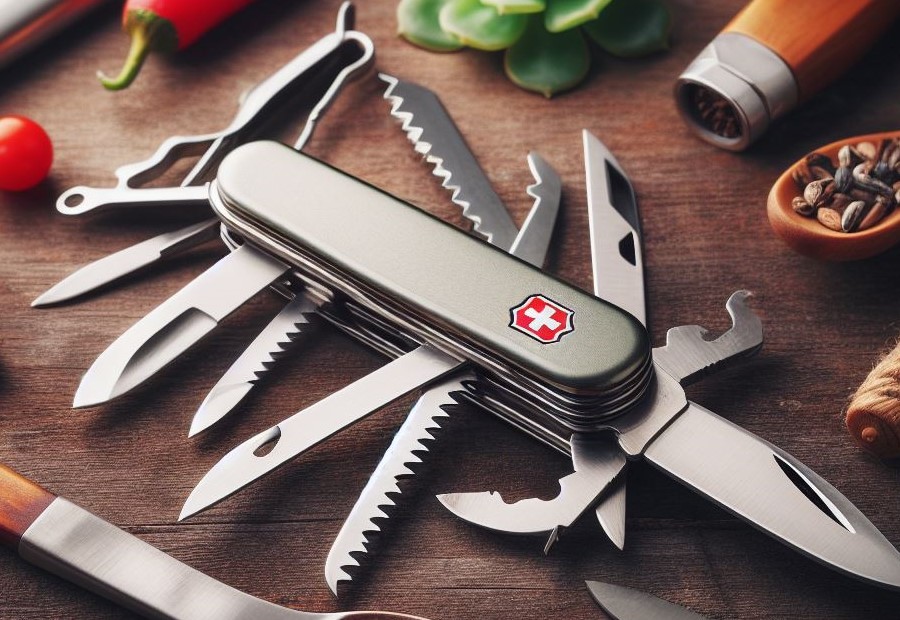
When it comes to tactical rescue knives, their uses and applications are incredibly versatile. In this section, we’ll dive into the various situations where these knives truly shine.
From handling emergency situations to quickly cutting seatbelts and ropes, to breaking glass in a pinch, and even as a means of self-defense – tactical rescue knives prove to be invaluable tools.
Let’s explore the practicality and effectiveness of these knives in action.
Emergency Situations
Emergency situations are the primary situations where tactical rescue knives are used. In these critical scenarios, having a reliable and versatile tool can be a matter of life and death.
- First aid: Tactical rescue knives can be used to quickly cut clothing or bandages to provide immediate medical assistance to injured individuals.
- Vehicle accidents: When trapped inside a vehicle, a tactical rescue knife can be used to cut through seatbelts and free oneself or others.
- Outdoor emergencies: Whether it’s during hiking, camping, or other outdoor activities, a tactical rescue knife can help in tasks such as cutting ropes, making shelters, or preparing food.
- Water-related incidents: In emergency situations where someone is trapped underwater or in a sinking vessel, a tactical rescue knife with a water-resistant grip can assist in cutting harnesses or ropes.
It’s important to note that tactical rescue knives should be used by trained individuals who are aware of the proper techniques and safety guidelines. In emergency situations, quick thinking and the right tool can make a significant difference.
Cutting Seatbelts and Ropes
When it comes to cutting seatbelts and ropes with a tactical rescue knife, it’s important to follow these steps:
- Ensure the safety of yourself and others before attempting to cut any material.
- Hold the knife with a firm grip, positioning your hand away from the blade.
- Locate the seatbelt or rope that needs to be cut.
- Place the blade of the knife near the starting point of the seatbelt or rope.
- Apply pressure to the blade and make a swift, controlled motion to cut through the material.
- If the seatbelt or rope is thick, it may require multiple cuts or increased force.
- After cutting, ensure that there are no remaining strands or pieces that could pose a hazard.
- Secure the knife in a safe manner, such as in a sheath or pocket, to prevent accidental injury.
Remember to practice caution and only use a tactical rescue knife for its intended purposes. In emergency situations, quick and precise cutting of seatbelts and ropes can save lives.
Breaking Glass
When it comes to emergency situations, breaking glass with a tactical rescue knife can be a crucial step.
Follow these effective steps:
- Choose a window or glass surface that is free from any obstacles or obstructions.
- Ensure you have a firm grip on the tactical rescue knife.
- Position the knife at a 45-degree angle towards the glass.
- Apply strong and controlled force by using your dominant hand to strike the glass with the butt of the knife.
- Repeat the striking motion if necessary, focusing on the same spot or moving along the perimeter of the glass.
- Once the glass breaks, use caution to clear any remaining shards or debris before entering or exiting through the broken window.
Proper technique and precision are key when it comes to breaking glass with a tactical rescue knife. Always prioritize safety for yourself and others. Make sure you have the necessary training and knowledge to handle emergency situations effectively.
Self-Defense
When it comes to self-defense, a tactical rescue knife can be a valuable tool. Here are the steps to consider when using a tactical rescue knife for self-defense:
- Familiarize yourself with the knife: Get to know its features, such as the blade type, handle design, and locking mechanism.
- Practice proper grip: Hold the knife securely with a firm grip to ensure better control during self-defense situations.
- Target vital areas: In a self-defense situation, aim for vulnerable areas such as the abdomen, throat, or groin for maximum effect.
- Use swift and decisive movements: Execute quick and precise strikes to disable your attacker and create an opportunity to escape.
- Prioritize your safety: Avoid engaging in unnecessary confrontations and always prioritize your personal safety.
- Stay aware of legal limitations: Understand the laws regarding self-defense in your area to ensure you are acting within the confines of the law.
- Maintain situational awareness: Be aware of your surroundings at all times to identify potential threats and react accordingly.
Remember, self-defense should only be used as a last resort when there is an imminent threat to your safety. It is important to seek professional advice on self-defense techniques and consider self-defense classes for comprehensive training.
Safety Guidelines for Using Tactical Rescue Knives
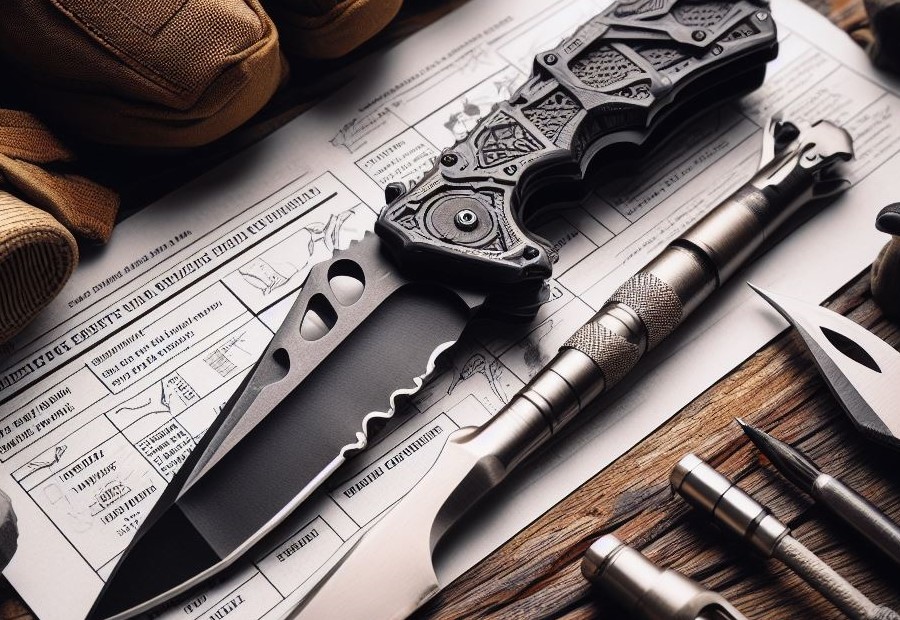
When using tactical rescue knives, it is crucial to prioritize safety.
Follow these safety guidelines to ensure safe and effective use:
- Always keep the blade clean and sharp to prevent accidents.
- Use the knife only for its intended purpose, such as cutting ropes or seatbelts in emergency situations.
- Keep the knife securely stored in a sheath or holster when not in use.
- Never point the knife at yourself or others and avoid unnecessary swinging or brandishing.
- Use proper cutting techniques to avoid slipping and causing injury.
- Always handle and carry the knife with caution, keeping it away from children and unauthorized users.
- Regularly inspect and maintain the knife, checking for any damages or wear and tear.
- Receive proper training on how to use a tactical rescue knife safely and effectively.
- Adhere to any additional safety guidelines provided by the manufacturer.
By following these safety guidelines, you can ensure that using a tactical rescue knife is a safe and valuable tool in emergency situations.
How to Choose the Right Tactical Rescue Knife?
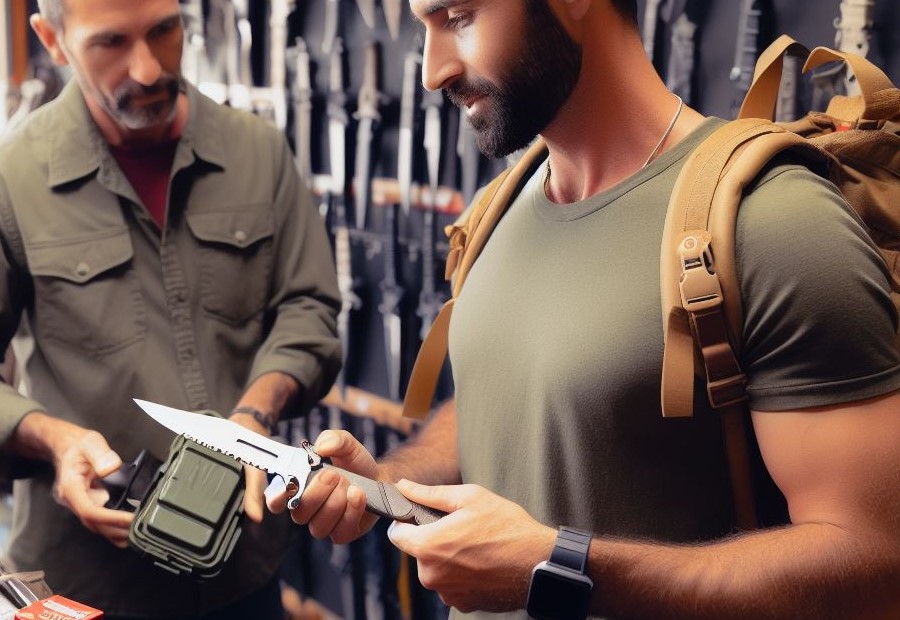
When looking for the perfect tactical rescue knife, it’s crucial to take into account the following factors:
- Blade Material: It is important to seek out a knife with a blade material that is sturdy and long-lasting, such as stainless steel or high carbon steel.
- Blade Design: You should consider the type of blade design that best fits your requirements. Choices include tanto, drop point, or serrated blades.
- Handle Material: It is essential to find a knife with a handle made of materials like G10, rubber, or textured metal to ensure a secure grip.
- Size and Weight: Take into consideration the size and weight of the knife based on your intended usage. For everyday carry, a compact and lightweight knife may be more suitable.
- Safety Features: Look for features such as a locking mechanism to ensure that the blade remains securely in place during use.
- Additional Tools: Determine if you require additional tools like a glass breaker, seatbelt cutter, or integrated whistle for emergency situations.
- Price: Establish a budget and compare prices to find a tactical rescue knife that offers good value for your money.
Frequently Asked Questions
What is a tactical rescue knife?
A tactical rescue knife is a vital tool designed for emergency situations, often used by first responders, emergency personnel, and outdoor enthusiasts. It typically features various elements such as a seat belt cutter, glass breaker, and a serrated blade to aid in rescue operations.
What are the common details of a tactical rescue knife?
A tactical rescue knife commonly includes features such as a seat belt cutter, partially serrated 440C stainless steel blade, assisted spring opening for one-handed use, pocket clip to prevent loss, and sometimes an LED light with replaceable batteries for low-light situations.
How does a seat belt cutter work on a tactical rescue knife?
A seat belt cutter on a tactical rescue knife is typically located at the base of the handle and utilizes a stainless steel razor blade. It is designed to easily and safely cut through seatbelts to free individuals in emergency situations without risking further injury.
What is the significance of a 1/2 serrated 440C stainless steel blade in a tactical rescue knife?
A 1/2 serrated 440C stainless steel blade on a tactical rescue knife provides versatility for various cutting needs.
The serrated edge is particularly useful for cutting through fibrous materials such as rope and seatbelts, enhancing the knife’s effectiveness in emergency scenarios.
How does a tactical rescue knife help in safe escape through car windows?
A tactical rescue knife often features a spring-loaded steel tip window punch. This tool enables easy and safe escape through car windows during emergencies, allowing individuals to quickly exit a vehicle that may be submerged, on fire, or otherwise inaccessible.
What makes the T3 Tactical Auto Rescue Tool a solid choice for outdoor enthusiasts?
The T3 Tactical Auto Rescue Tool is a great survival tool for outdoor enthusiasts because it offers advanced features such as a seat belt cutter, 440C stainless steel hook blade, spring-loaded steel tip window punch, and an LED light for low light situations.
Its compact size and lightweight design, along with the stainless-steel belt clip and heavy-duty nylon belt sheath, make it easy to carry in outdoor environments where preparedness is essential.

